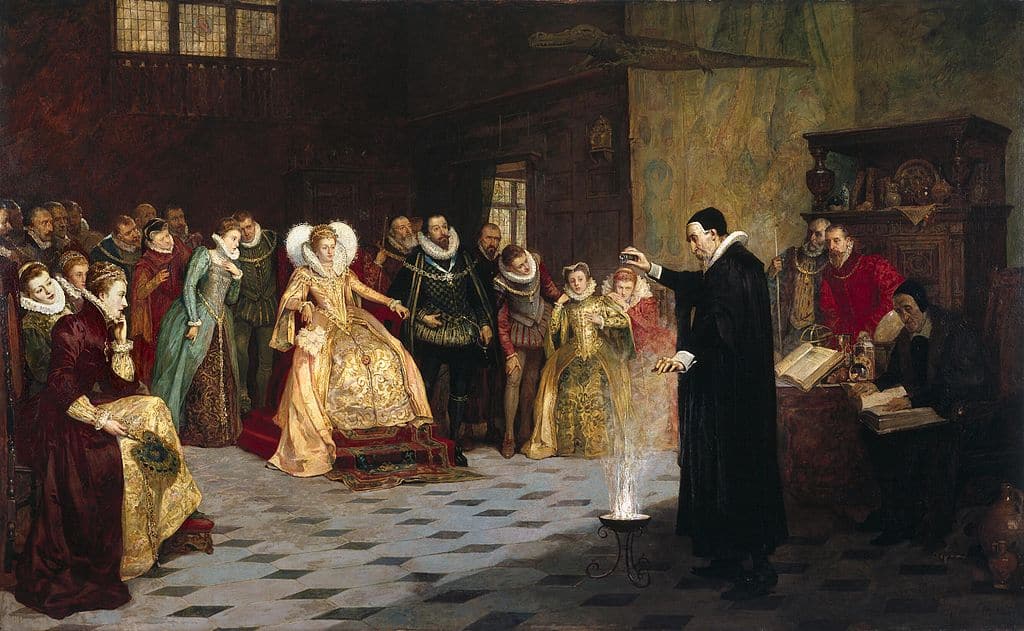 “The Yggdrasil-Tree is a beautiful symbolical representation of Freemasonry,” says Daniel Sickels in his General Ahiman Rezon. The book, which was intended to be read by Freemasons who wanted insight into their fraternity and its rituals, was published in 1868. Yggdrasil, says Sickels, “illustrates the character of Masonic secrecy.” Yet this was, of course, the world tree of pre-Christian, Norse mythology, and Sickels, who also speaks of the norns (the female figures who predetermine the fates of men), is certainly well aware of its character.
“The Yggdrasil-Tree is a beautiful symbolical representation of Freemasonry,” says Daniel Sickels in his General Ahiman Rezon. The book, which was intended to be read by Freemasons who wanted insight into their fraternity and its rituals, was published in 1868. Yggdrasil, says Sickels, “illustrates the character of Masonic secrecy.” Yet this was, of course, the world tree of pre-Christian, Norse mythology, and Sickels, who also speaks of the norns (the female figures who predetermine the fates of men), is certainly well aware of its character.
Sickels’ work appeared more than 85 years prior to the publication of Gerald Gardner’s Witchcraft Today — which initiated the birth (or, as some would maintain, revival) of the Pagan religion of Wicca — and just over a century prior to the “revival” of Asatru, the Germanic-inspired, and rune-based Pagan religion which emerged during the 1970s. Yet, some other Freemasons of the 19th century were inspired by northern European, pre-Christian mythology, and absorbed some elements into Masonic, or “fringe Masonic,” ritualism.
First, then, we should ask, Why? After the fraternity had spread from Britain to Europe, Freemasons on the continent began to reevaluate the Masonic mythology and ritual. Not content with the fact that it had emerged from the stonemasons’ guild, all kinds of theories were created, imagining more exotic roots. In France, Scotland (a French ally) was emphasized, and England (where the first Grand Lodge had been founded, and Freemasonry as an independent fraternity emerged) was downplayed. Instead of the stonemasons’ guild, Crusader Orders, alchemy, and Rosicrucianism were now imagined to be the real origins.
New rituals and Masonic societies (or “Rites”) were created, incorporating all of these elements. And it is from this milieu that the Hermetic Order of the Golden Dawn, the Ordo Templi Orientis, and even the mainstreamed esoteric organization Ancient Mystical Order Rosae Crucis (AMORC). derived their general initiatic structure and symbolism.
The interest in Norse mythology by some Freemasons is not, as such, surprising. Mythology and religion have been interests since the beginning.
Norse mythology had come to public attention via the “great operas” of German composer Richard Wagner (1813–1883) not long after Sickels had published his General Ahiman Rezon, with Wagner’s Das Rheingold (1869) and Die Walküre (1870). Only two years later, Albert Pike’s Morals and Dogma was published. The book was significant to Freemasons who elected to take the “higher Degrees” of the Ancient and Accepted Scottish Rite of Freemasonry. In it, he states, “Our northern ancestors worshipped this tri-une Deity; ODIN, the Almighty FATHER; FREA, his wife, emblem of universal matter; and THOR, his son, the mediator.”
The most significant influence of the Nordic mysteries on Freemasonry, however, was the emergence of the Knight of Scandinavia degree in the Rite of Memphis and Mizraim (the Rite was one of many claimed by the OTO for its lineage and legitimacy).
The Knight of Scandinavia is comprised of three sections, almost as if it were intended to be a self-contained initiatic system, such as Craft Masonry or Wicca, with their three degrees. At the beginning of the 20th century, Austrian mystic Guido von List claimed in his Secrets of the Runes that the ancient Germanic Pagan guild had three degrees, but the influence of Craft Freemasonry is evident here — indeed, one illustration in the book depicts not only runes and shields, but also a Masonic Square and Compasses in a square with a circle at three of the corners.

(This is a depiction of a Masonic altar, with three candlesticks or representatives of the “lesser lights.” Although a primitive stonemasons’ ritual existed earlier on, this symbolism emerged during the early 18th century.)
The initiate of the Knight of Scandinavia is entered into the Norse, or “Scandinavian,” Odinic mysteries by officers representing The High One, Highest, and Third — three aspects of the northern European father god. At the completion of the ritual, the initiate is also presented with the 16 rune Futhark as a “cypher.”
Although Gardner claimed to have been initiated into an ancient, surviving lineage of Wicca, he also acknowledged drawing on other traditions where the rituals had, in his view, not been adequately preserved. There are aspects of Aleister Crowley’s writings, and aspects of the Golden Dawn, though the influence of Freemasonry is less well known, despite both calling themselves “the Craft,” and having three degrees (excluding the semi-official “higher,” or additional, degrees of Freemasonry). Notably, also, both talk of the “working tools” and the “Five Points of Fellowship,” though they are entirely different in character in the fraternity and the religion.
Freemasonry’s influence may have gone largely unacknowledged, though it, too, at times, has existed as a conduit for ideas and traditions. As such, for historians of spirituality, or for anyone wanting to understand the Western esoteric tradition, it is a subject that cannot be ignored.
Image credits: Andy Chase, Bill Bradford








